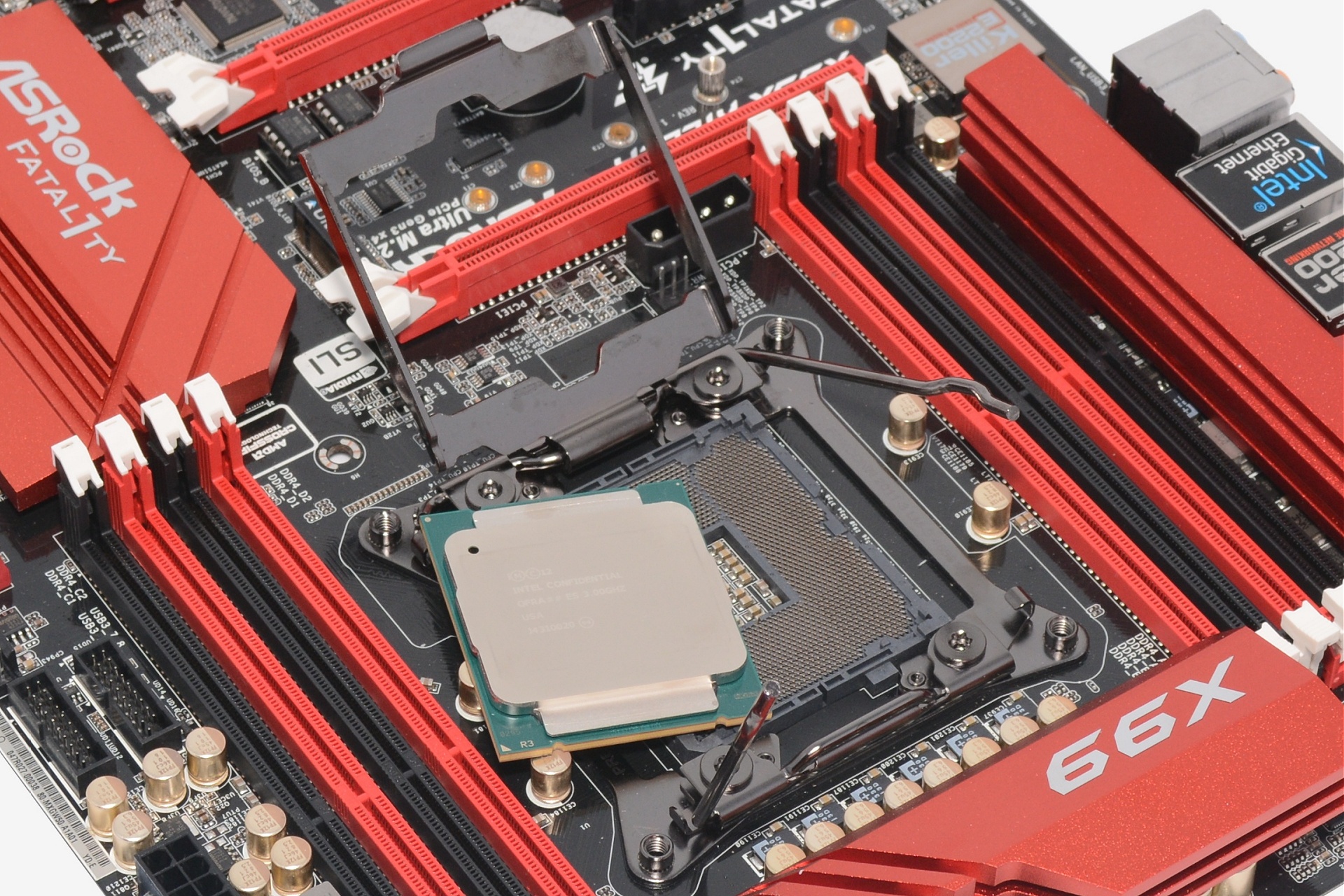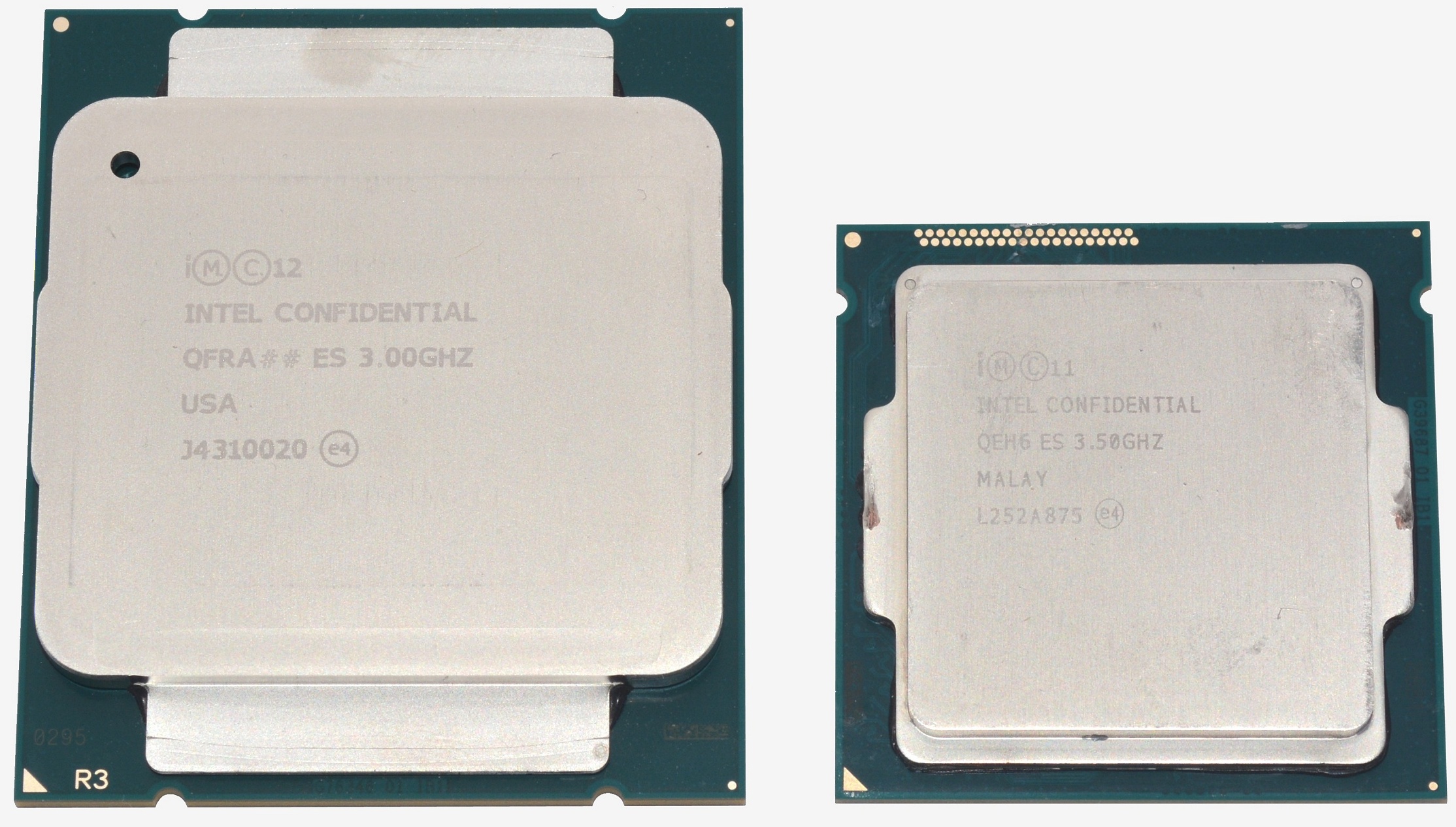While Haswell's refresh laid the foundation for a powerful desktop PC earlier this year with the Core i7-4790K and Z97 motherboards, folks who want the quickest Intel rig possible have been building with the six-core Core i7-4930K ($555) and Core i7-4960X ($990) LGA 2011 chips from last September's Ivy Bridge-E range, which boast massive 12MB and 15MB L3 caches and support for quad-channel DDR3-1866 memory.
Intel's Extreme Edition processor line is over a decade old now starting way back in 2003 with the single-core Pentium 4 EE 3.4GHz, which shared the same Socket 478 platform as standard Pentium 4 processors but received an exclusive L3 cache. Having been comprised of 169 million transistors on the 130nm process and priced in line with what it might have cost to build an entire PC, the Pentium 4 EE was serious business.
The next noteworthy stop along the line was 2006's Core 2 Extreme X6800, which used the 65nm process and was the first to boast a quad-core design, though at $1,000 it was made redundant by the Q6600 that followed six months later at half the price. From the Core 2 Extreme came the Core i7-975 Extreme Edition, but this part was just as disappointing as the X6800 with no real benefits over chips that were much cheaper.
Although the Core i7-980X brought about six-core Intel processors in 2010, it sucked compared to the standard Core i7s of the time, offering no significant benefits besides an unlocked clock multiplier, a feature for which few could justify paying double. With enthusiasts catching on to the fact that the only thing extreme about Intel's Extreme Edition was its price tag, the company made some bigger changes in 2011.
Sandy Bridge-E launched with its own platform where the $1,000 EE chips were a bit better endowed than the standard Core i7s – far from a great value, but they at least offered perks such as a larger L3 cache. Things remained much the same two years later (last September) with Ivy Bridge-E – it brought a beefier L3 cache but its supporting X79 chipset offered nothing over the Z87 and was later eclipsed by the Z97.
So, how does Haswell-E rectify all this? For starters, the chip we'll be looking at boasts eight cores, a massive 20MB smart cache and support for the latest DDR4 memory. Intel's latest Extreme Edition package is also accompanied by a new 9-series chipset, the X99, which supports more SATA 6Gb/s ports (10 rather than just two) and finally brings native USB 3.0 support to the company's flagship platform.
First let's look at the three new processors: the Core i7-5820K, Core i7-5930K and Core i7-5960X. Pricing starts at $389 for the 5820K, while the Core i7-5930K costs considerably more at $583. At first glance the 50% price increase seems unjustified and while many might successfully argue that it is, what's important to note here are the available PCI Express 3.0 lanes which increase from 28 to 40 lanes. The Core i7-5820K offers 12 more lanes than the Core i7-4970K.
(Haswell-E left and Haswell right)
Therefore unless you require more than 28 lanes for say a 4-way multi-GPU setup, then the cheaper Core i7-5820K is going to be a better buy than the 5930K.
The Core i7-5960X is the Extreme Edition version and it is a considerable upgrade from the Core i7-5930K. While the PCIe 3.0 lanes remain at 40, users get 33% more cache at 20MB, the core count increases from six to eight and with the aid of Hyper-Threading that means 16 threads are supported.
(Haswell-E left and Haswell right)
Despite featuring the most cores and the biggest price tag at $1,050, the 5960X is clocked the lowest out of the three at just 3.0GHz with a maximum Turbo frequency of 3.5GHz. This could mean the 5960X is slower than the Core i7-4960X when using six or less cores as the 4960X is clocked 20% higher.
All three Haswell-E processors support DDR4 memory clocked at 2133MHz and we are not sure how much overclocking headroom there is here. Our 4960X for example was never stable with DDR3 memory clocked above 1600MHz, so it will be interesting to see if the 5960X faces similar limitations.
The TDP (thermal design power) rating for the Haswell-E processors has been increased from the 130w rating of Ivy Bridge-E to 140w. That isn't surprising given the standard Haswell processors were rated higher than the standard Ivy Bridge processors (84w vs. 77w).
Something worth keeping in mind is the fact that the Core i7-5960X, or any of the Haswell-E processors, don't come with any kind of cooling. Intel recommends liquid cooling and their TS13X solution will cost around $100.
Along with a new 9-series chipset the Haswell-E architecture also calls for a new socket, which Intel has dubbed LGA2011-v3. In short, this new version of the LGA2011 socket is not compatible with the original used by Sandy Bridge-E and Ivy Bridge-E. This means these older processors cannot be used on the new X99 motherboards, while the Haswell-E processors cannot be used on older X79 motherboards.
The X99 chipset brings some much needed improvements over the older X79 chipset. Embarrassingly, Intel's previous flagship chipset only supported two SATA 6Gb/s ports while native USB 3.0 support didn't even exist. That's embarrassing because AMD's $30 AM1 platform is better equipped.
So the LGA2011 platform finally gets native USB 3.0 support, albeit on a new version of the platform. No longer do users have to suffer with just a few SATA 6Gb/s ports as the X99 offers a grand total of 10. Get ready for boards boasting 20 something SATA ports out of the box.
Compared to the Z97 chipset, the X99 isn't worlds different, with the most notable difference being the extra four SATA ports.




